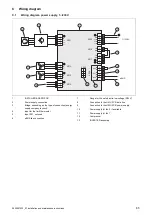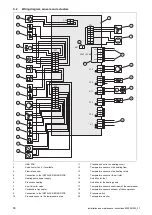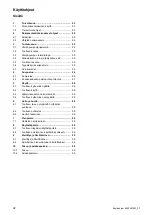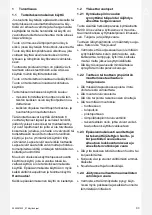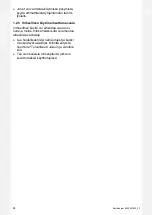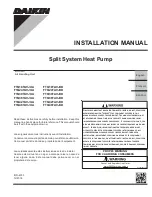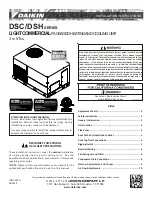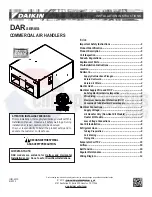
80
Installation and maintenance instructions 0020297933_07
by Vaillant or customer service or a similarly qualified
person in order to prevent hazards.
5.
In the unit, check that the electrical wire are seated
firmly in the plugs or terminals.
6.
In the unit, check whether the electrical wires are free
from damage.
11.4.9 Checking the small damping feet for wear
1.
Check whether the damping feet are significantly com-
pressed.
2.
Check whether the damping feet have significant
cracks.
3.
Check whether there is substantial corrosion on the
screwed connection for the damping feet.
4.
If required, procure and install new damping feet.
11.5
Completing inspection and maintenance
▶
Installing the casing sections.
▶
Switch on the disconnector to which the product is con-
nected in the building.
▶
Start up the product.
▶
Carry out an operational test and a safety test.
12 Repair and service
12.1
Preparing repair and service work on the
refrigerant circuit
Only carry out work if you have specific expert refrigeration
knowledge and are competent at handling R290 refrigerant.
Danger!
Risk of death caused by fire or explosion
if there is a leak in the refrigerant circuit!
The product contains the combustible refri-
gerant R290. In the event of a leak, escaping
refrigerant may mix with air to form a flam-
mable atmosphere. There is a risk of fire and
explosion.
▶
If you are working on the product when it
is open, before starting work, use a gas
sniffer to ensure that there is no leak.
▶
In the case of a leak: Close the product's
housing, inform the end user, and notify
customer service.
▶
Keep all ignition sources away from the
product. In particular, open flames, hot
surfaces with temperatures above 370 °C,
electrical devices that are not free from
electrical sources, static discharges.
▶
Ensure that the room is sufficiently aer-
ated around the product.
▶
Use a restriction to ensure that unauthor-
ised personnel cannot enter the protective
zone.
▶
Switch off all of the disconnectors to which the product is
connected in the building.
▶
Disconnect the product from the power supply but ensure
that the product is still earthed.
▶
Restrict the working area and put up warning signs.
▶
Wear suitable personal protective equipment and bring a
fire extinguisher with you.
▶
Use only safe units and tools that are permitted for R290
refrigerant.
▶
Monitor the atmosphere in the working area using a suit-
able gas detector that is positioned close to the floor.
▶
Remove all ignition sources, e.g. tools that are not spark-
free. Take protective measures to prevent static dis-
charges.
▶
Remove the top casing, the front casing and the right-
hand side casing.
12.2
Removing refrigerant from the product
Danger!
Risk of death caused by fire or explosion
when removing the refrigerant!
The product contains the combustible refri-
gerant R290. The refrigerant may mix with air
to form a flammable atmosphere. There is a
risk of fire and explosion.
▶
Only carry out the work if you are compet-
ent at handling R290 refrigerant.
▶
Wear suitable personal protective equip-
ment and bring a fire extinguisher with
you.
▶
Only use tools and units that are permitted
for R290 refrigerant and are in proper
working condition.
▶
Ensure that no air gets into the refrigerant
circuit, into refrigerant-carrying tools or
units, or into the refrigerant cylinder.
▶
Note that the refrigerant R290 must never
be introduced into the sewage system.
▶
Do not use the compressor to pump the
refrigerant into the outdoor unit (no pump-
down).
Caution.
Risk of material damage when removing
the refrigerant.
When removing the refrigerant, there is a risk
of material damage caused by freezing.
▶
If no system separation is present, re-
move the heating water from the con-
denser (heat exchanger) before the re-
frigerant is removed from the product.
1.
Procure the tools and units that are required for remov-
ing the refrigerant:
–
Extraction station
–
Vacuum pump
–
Recycling cylinder for refrigerant
–
Manometer bridge
2.
Only use tools and units that are permitted for R290
refrigerant.
3.
Use only recycling cylinders that are approved for
R290 refrigerant, have been labelled appropriately, and
are equipped with a pressure relief and isolation valve.




















